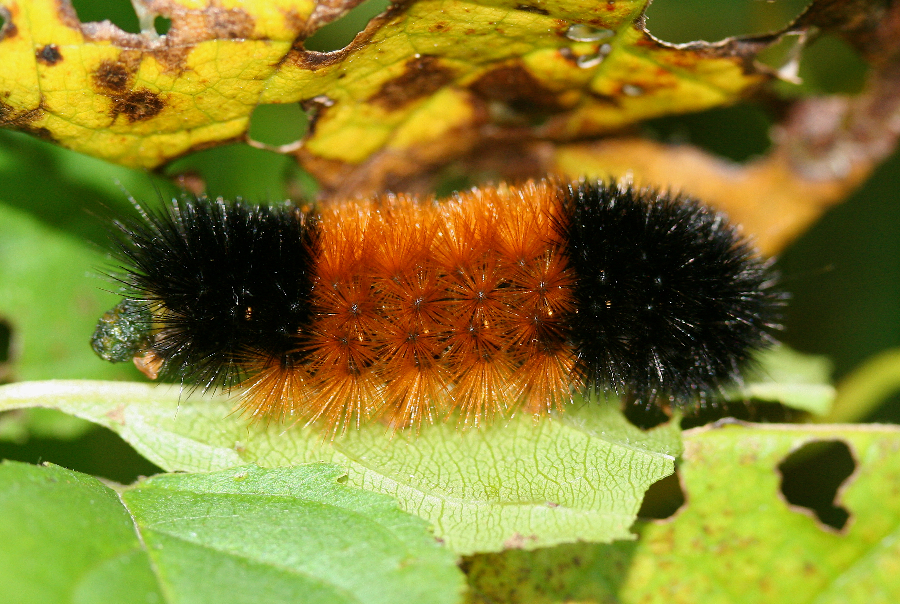Woollybear Facts
 The common moth Pyrrharctia isabella is known by different common names at its two main life stages. The adult is the Isabella tiger moth and the larva is called the banded woolly bear. The larvae of many species of Arctiid moths are called "woolly bears" ("wooly bears", "woollybears") because of their long, thick, furlike setae. This species is black at both ends with a band of coppery red in the middle. The adult moth is dull yellow to orange with a robust, furry thorax and small head. Its wings have sparse black spotting and the proximal segments on its first pair of legs are bright reddish-orange.
The common moth Pyrrharctia isabella is known by different common names at its two main life stages. The adult is the Isabella tiger moth and the larva is called the banded woolly bear. The larvae of many species of Arctiid moths are called "woolly bears" ("wooly bears", "woollybears") because of their long, thick, furlike setae. This species is black at both ends with a band of coppery red in the middle. The adult moth is dull yellow to orange with a robust, furry thorax and small head. Its wings have sparse black spotting and the proximal segments on its first pair of legs are bright reddish-orange.
The banded woolly bear larva emerges from the egg in the fall and overwinters in its caterpillar form. It survives winter freezes by producing a cryoprotectant in its tissues. Once the weather warms, the larva devours all the grass and weeds it can, pupates, and becomes an adult, which then lives through the summer. It is the larvae of this species which are the subject of common folklore, which has it that the forthcoming severity of a winter can be predicted by the amount of black on the caterpillar; this is the most familiar woolly bear in North America.
The setae of the woolly bear are not urticant, but they will play dead if picked up or disturbed.
